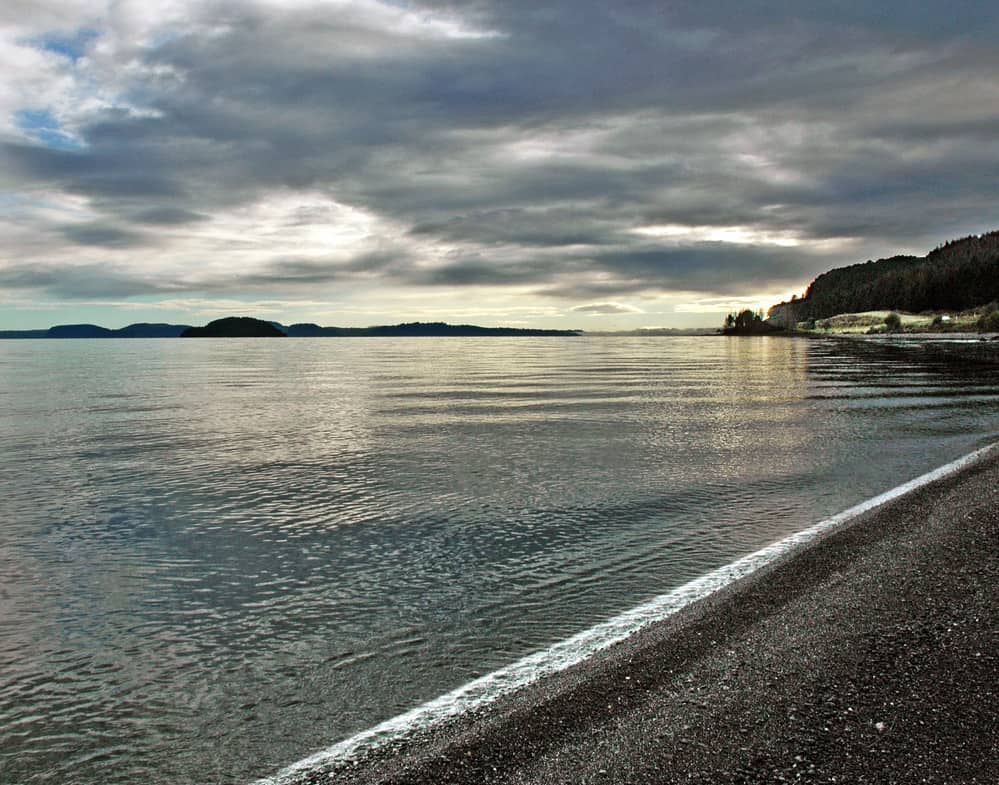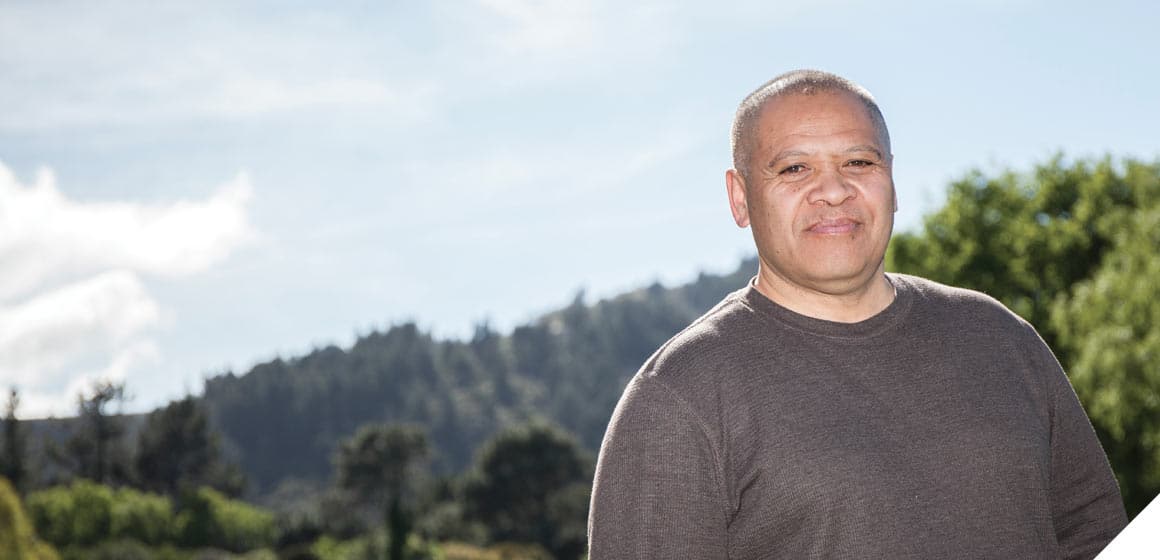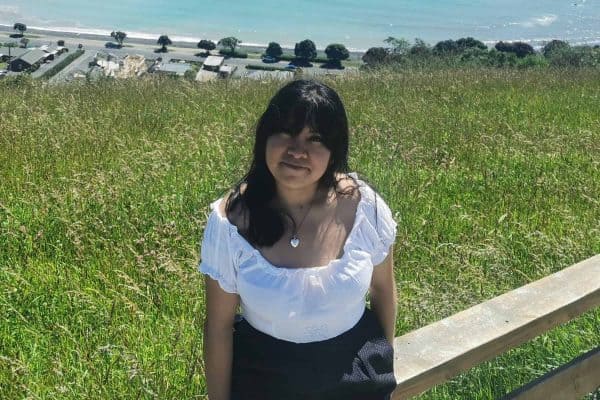Student profile: Hauiti Hakopa
30/04/2019
He reo kōrero te pūrākau ki a Ngāti Tuwharetoa
Ko te tuhinga kairangi a Hauiti Hākopa he waihanga i te hohonu, i te ātaahua, i te māramatanga o te hono tātai o te pūrākau hāngai pū ki te whakapūmautanga o Ngāti Tūwharetoa. Ka tātaritia, wetewetehia ngā hekenga mātauranga hohonu, uarā, tātai whakawhiti kōrero kai roto ake anō i ēnei kōrero pūrākau a Ngāti Tūwharetoa. Ko aua hekenga kōrero whakaarorangi nei i ahu mai i te karamata, manawapū o ngā papa tipu whenua reo kōrero. Kai konei ka ora mai te mauri, te tuakiri, te tiketike tūahu whakapiringa, whakahāngai kōrero ki roto i tēnei tuhinga kairangi. Ko ngā pātaka, kete kōrero o tēnei tuhinga kairangi ka tūhono e puaki mai ai te tiketike o te reo kōrero ā-waha, ā-hinengaro, ā-ngākau whakawhiti whakaaro. I konei ka whakaaria anō ētahi atu kōrero mai i ngā pukapuka kua tāia, ā, i ngā pukapuka kāre anō kia tāia kia au ai te rongo o te hohonu o te mātauranga haere ake nei ngā tau, hāngai ki te reo kōrero o te whenua matatū tonu.
Kai roto i ngā kōrero pūrākau a Ngāti Tūwharetoa te hohonu, taketake o ngā kōrero tīpuna hai āwhina i a tātau ki te whakatipu i ngā hohonu mātauranga kaiārahi, tūhonotanga mo nga tau kai mua i a tātau e puare ai te tatau hou ki ngā hangarau kawe i te reo ipurangi hononga ki ngā hangarau whakaora, whakatinana kōrero, whāingai i aua kōrero whakaheke ki ngā whakatipuranga hou o ngā tau tuangahuru haere ake nei ngā tau.
Pūrākau and the sacred geographies of belonging
A bit about me
Tēnā tatou. Ko taku taumata ko runga ko Tongariro. Mārama te titiro ki te ao o tōku tipuna a Tūwharetoa. Ko au tēnei e mihi ake rā ki te nui, me te rahi o Aotearoa me te Waipounamu.
I derive my whakapapa connections to the Taupō region from my eponymous ancestor Tūwharetoa and his sons. I was born and bred in the southern region of Taupō, in Tokaanu. My family were domiciled in Taupō throughout my school years until I left for University.

I graduated from the University of Otago with a Bachelor of Surveying, a Postgraduate Diploma in Science, a Master’s in Science and finally a Doctorate in Spatial Information Technology and its’ application to mōteatea. My abiding interest is in land and whakapapa thereof, cartography and the mapping of Māori connection and relationship to their ancestral landscapes.
My project
My 2019 doctorate from Te Whare Wānanga o Awanuiārangi was supported by Resilience to Nature’s Challenges. It is primarily focused on pūrākau and how Māori connect to their ancestral landscapes, what I termed as the sacred geographies of belonging. Moreover, it argues that identity, located in the ethos of tangata whenua, is the basis for resilience for Māori. Resilience for Māori had been described in terms of the relentless motion of the tide. The metaphor of the tōrea pango (black oyster-catcher) was used to describe the patience necessary to hold a steady course. It was necessary to converge three threads: one, identity located in sacred places; two, the tangata whenua ethos; and three, resilience located in identity.
The primary aim of this research was to define/find/illustrate the explicit link between identity and ancestral landscapes and vice-versa; but more than that, it was to discover how each of these concepts interact and influence the other.
There were three primary objectives:
- To examine the esoteric knowledge and wisdom of Ngāti Tūwharetoa pūrākau and its’ impact and influence on shaping how we think about cultural identity embedded in ancestral landscapes.
- To critically examine the tangata whenua ethos and the connection between identity, resilience and its’ relevance for Māori in the digital era.
- To critically examine converging modern technology with pūrākau as a platform for disseminating cultural content
The research questions were focused on the following:
- What are the critical elements of cultural identity layered within Ngāti Tūwharetoa pūrākau that provide guidance for connecting with the tangata whenua ethos?
- What is the value of the tangata whenua ethos today in the digital era?
- How can modern technology provide a gateway for Māori to develop a relationship with ancestral landscapes?
The research revealed the following insights:
One, it provides evidence that Mātauranga Māori is of the highest form of academic scholarship;
Two, it unpacks the vitality, essence and meaning of pūrākau and positions it as a knowledge system within the traditional sense of Mātauranga;
Three, it positions pūrākau as an appropriate traditional framework for examining tribal cultural identity located in sacred sites steeped in whakapapa;
Four, it unravels the key messages contained in Tūwharetoa pūrākau, the intimate link to ancestors found therein and provides a way for tangata whenua to develop resilience;
Five, it advances the concept that sacred geographies (significant sites that contain the vitality of ancestral footprints) are a reservoir of accumulated ancestral strength essential for maintaining the vitality and ethos of tangata whenua;
Six, it outlines a process for Māori who live remotely from their homelands around the world to develop a relationship with their sacred ancestral geographies using pūrākau.
Finally, I used the whakatauākī from one ancestor Tamamutu to frame the approach to the research. The compelling parts of the whakatauākī refers to: kia ata whakatere I te waka nei – to take care when making decisions, and “ka whakahoki atu ki te kapua whakapipi”, the clouds the travel the southern parts of Lake Taupō and for Tūwharetoa to always remember that our reservoir of strength resides in the Taupō ancestral landscapes.
Next steps
I am currently exploring a number of avenues to extend the doctoral research, one is to pursue post-doctoral research within the Resilience Challenge theme.




